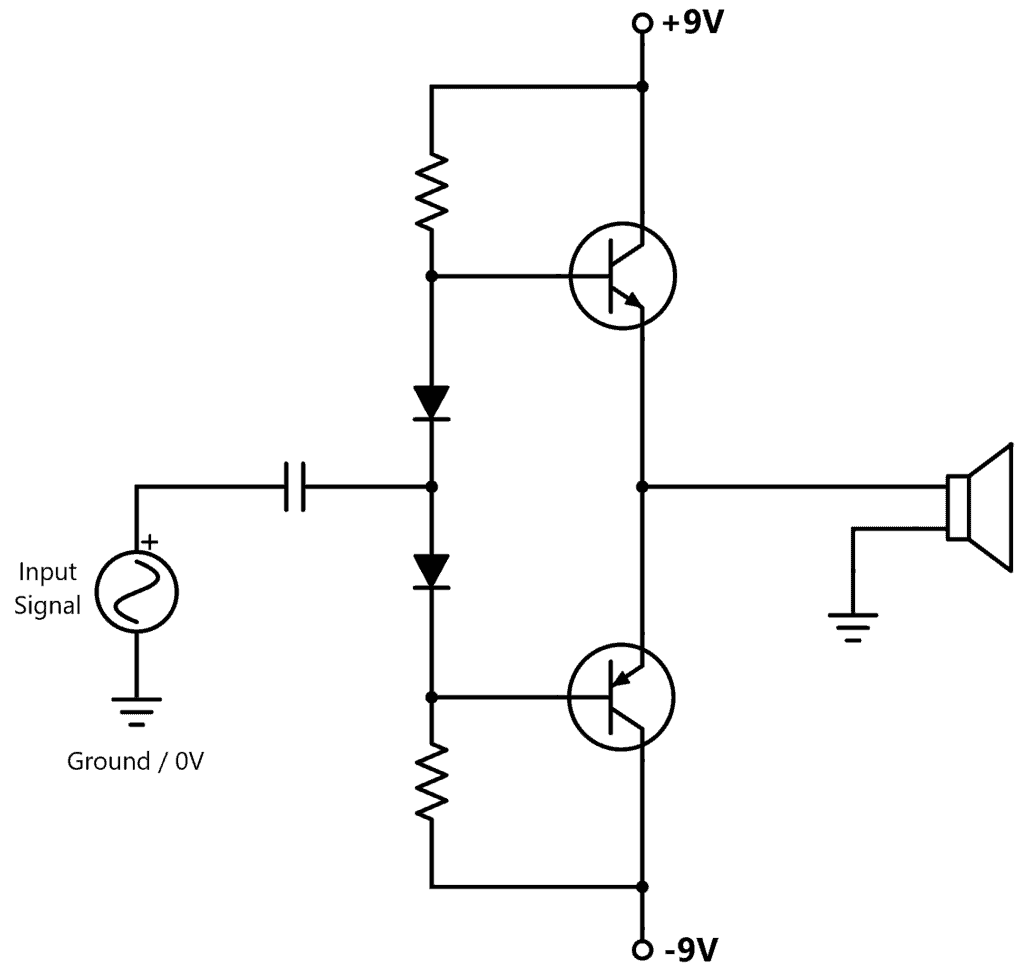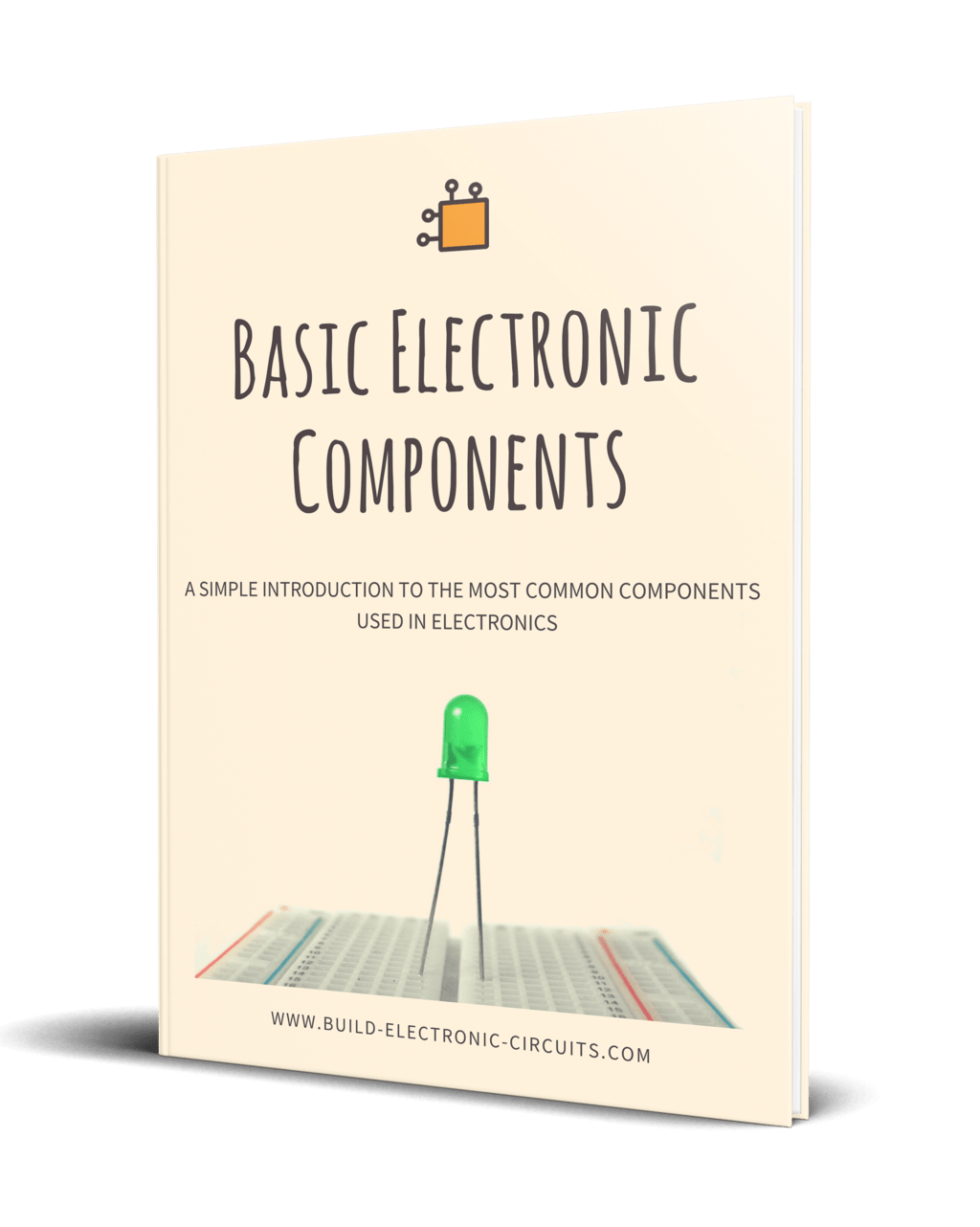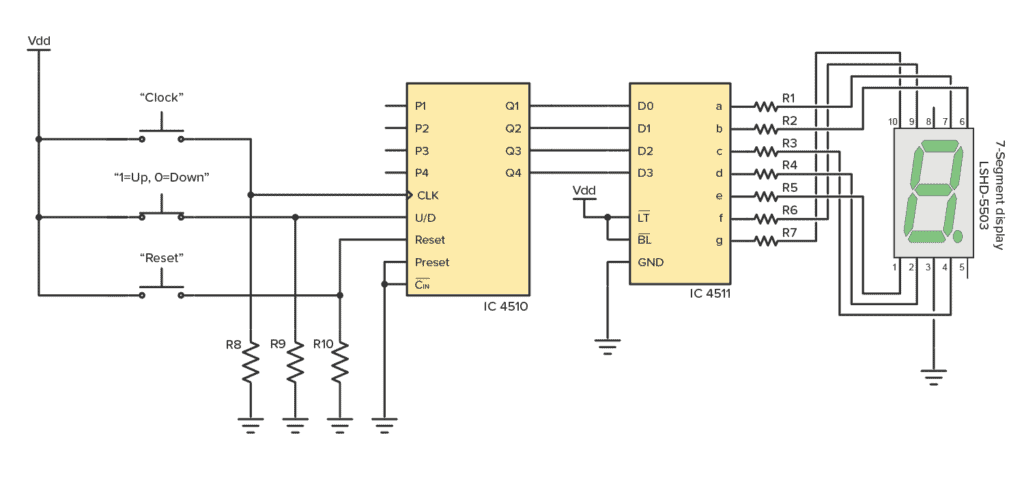
When you start learning about circuits, you’re bound to ask “what is ground?” at one point or another. Are you actually suppose to connect your circuit into the ground??
First of all: grounding in electronics is different from the earth connection in wall outlets (although they sometimes are connected).
Grounding in electronics
I got an email from a reader a little while back:
«The ground symbol keeps appearing at different points in a circuit and I could not understand why a particular place was chosen for grounding. What is ground?»
Grounding something simply means connecting it to ground.
And in electronics, ground is just a name we give to a certain point in the circuit.
For example, in a circuit with one battery (with a positive and a negative terminal), we usually refer to the negative terminal as ground.
And to simplify drawing the circuit, we use a symbol.

10 Simple Steps to Learn Electronics
Electronics is easy when you know what to focus on and what to ignore. Learn what "the basics" really is and how to learn it fast.

So instead of drawing lines to all the places that should be connected to minus, you instead place the ground symbol there. This makes the circuit diagram much cleaner when there are a lot of connections to minus.

Flow of Current When the Ground Symbol is Shown
To see how the current flows in a circuit diagram with ground symbols, just connect all the points that have ground symbols. That is what you do when you build the circuit.
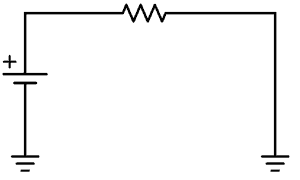
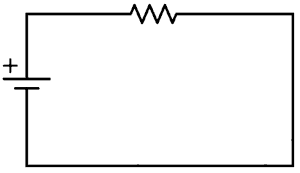
Circuits With Positive, Negative and Ground Connections
In some schematic diagrams, you’ll find a connection to a positive terminal, a negative terminal, and a ground terminal.
This is common in for example amplifier circuits:
So, how does this work?
In this scenario, the ground is the middle-point between the positive and the negative terminal. You can create these three voltage points for example by connecting two power sources in series:
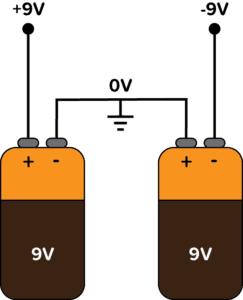
Since the ground terminal is in the middle between +9V and -9V, it’s normal to call it zero volts (0V).
Click here to learn what negative voltage is.
What is the Earth Ground in wall outlets?
Sometimes though, grounding refers to an actual connection to the earth. That is the case when talking about the wiring of the wall outlets in your house. In this case, the earth ground connection is an actual connection to the ground outside your house.
This connection is for safety and is often wired to the chassis of an appliance. The idea is that if a problem arises so that a live wire comes in contact with the chassis, the current is guided to the earth instead of through your body if you touch the chassis.
In some cases, for example in audio amplifiers, it’s common that the signal ground is also connected to the chassis, and thereby to the earth too.
Questions? Let me hear ’em in the comments below!
More Schematic Diagram Tutorials

10 Simple Steps to Learn Electronics
Electronics is easy when you know what to focus on and what to ignore. Learn what "the basics" really is and how to learn it fast.

